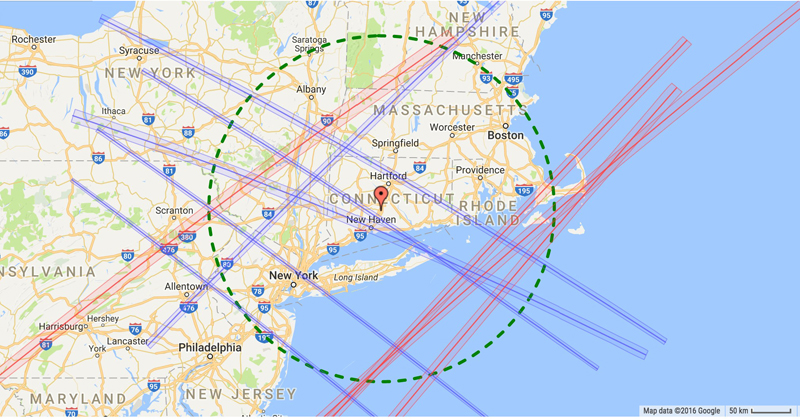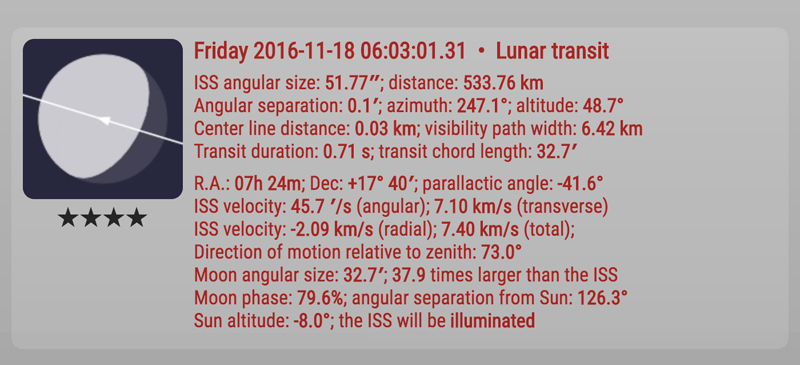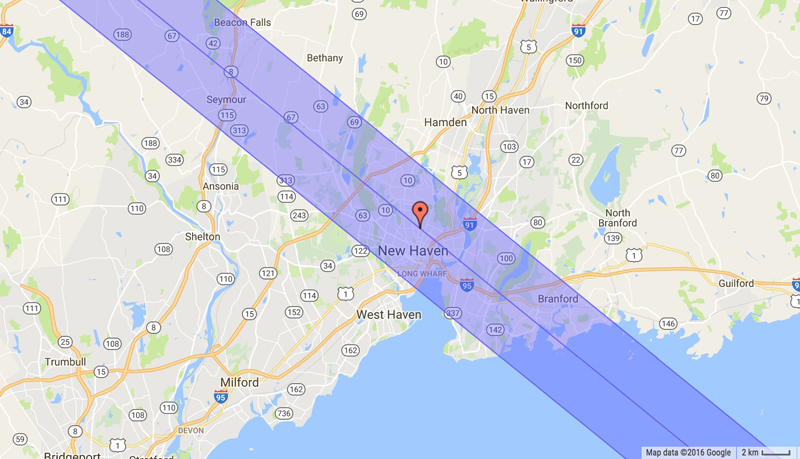ISS Lunar Transit at Leitner Family Observatory and Planetarium
6:03am, 18 Nov 2018
by Dave Noble
To Dream the Impossible Dream
It seemed almost unimaginable to me: photographing a moving target less than an arc minute in size as it zips across the Moon in a fraction of a second. And yet I had seen the amazing images of the International Space Station (ISS) silhouetted against the Moon’s bright face. How is capturing something like this possible?
A Not so Rare Occurrence
As it turns out, ISS transits across the Moon (or the Sun!) are not that rare. With an orbital period of about 90 minutes, the ISS has many chances to be glimpsed between the Moon and the Earth. And far from being visible from only a single point on the ground, the movement of the ISS sweeps out an observational path several hundred miles long during its brief encounter with the Moon.
Another huge factor in my favor was method used for targeting the ISS. Because I would be photographing the ISS transiting the Moon, I wouldn’t need to follow a small and fast moving target, but instead could simply aim for the Moon in advance and simply wait for the ISS to come to me.
Location Location Location
So the real trick to catching an ISS transit becomes choosing the location of the observing site. Fortunately, there are web sites dedicated to helping you find these locations.
One such website, transit-finder.com, is an excellent resource capable of calculating visible ISS transits of both the Moon and the Sun from anywhere on Earth as early as 30 days in advance. The website provides detailed technical data about upcoming transits and even grades events based on angular size of the ISS and the travel distance from your location.

Paths of upcoming ISS transits with the Moon (blue) and the Sun (red).
Timing is Everything
Since the predictions of transit-finder.com are limited to the next 30 days, I was in the habit of checking for local transits every month or so. When I checked in with the website at the beginning of November, I was excited to see a lunar transit occurring in the New Haven area around mid-month.
I began to prepare for the event by searching for potential observing sites along the path. Fortunately, this path was very close to Yale’s Leitner Family Observatory and Planetarium (LFOP) and so was an easy choice for the observing location.

Transit data. Four stars indicate very good viewing quality and close proximity to your location.

Transit path over New Haven, CT
